The New York Museum of Modern Art What Quote Did Harold Edgerton Say
Harold Edgerton: The man who froze time
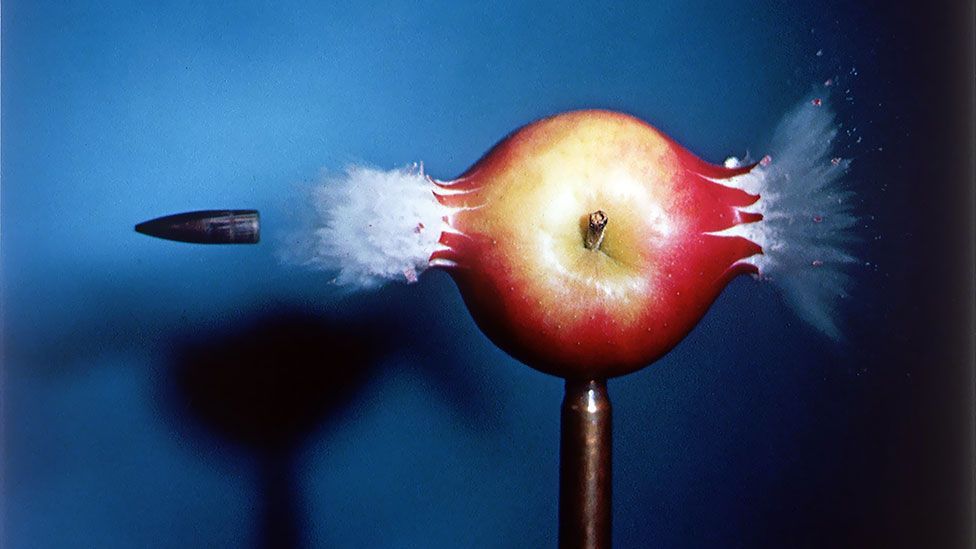
Harold Edgerton invented the electronic flash – which allowed him to capture things the human being eye cannot see. Stephen Dowling looks at his legacy.
Due east
Every fourth dimension you use the flash on your smartphone or camera, yous should requite silent praise to Harold Eugene Edgerton. In the era of vacuum tubes and radios the size of tables, Edgerton created a mode to stop the world; a bullet passing through an apple; a footballer'south boot connecting with a ball; the crown-like splash created from a single driblet of milk. He was the first man to harness electricity to freeze time to an instant.
Edgerton's iconic images would exist difficult enough to create today, even with computers on hand to open and close the shutter and fire the flash. Simply Edgerton took his pictures in the days of analogue, recording them on a motion movie camera converted to shoot at previously incommunicable speeds, and lighting them with an electric flash he invented himself. Intricate geometries happening so fast the man eye is incapable of comprehending them were suddenly captured for all to marvel at.
"He captured wonderful, captivating images that transcend the boundaries between science, art and amusement," says Colin Harding, a curator at the UK's National Media Museum in Bradford.

Harold Edgerton'south knack for invention created the electronic flash - allowing even the incredible speed of a bullet to be frozen in place. (Harold Edgerton Archive, MIT)
To decades of students at the Massachusetts Plant of Technology (MIT) he was known as 'Physician'. To the pioneering underwater explorer Jacques Cousteau, who collaborated with him, 'Papa Wink'. Edgerton was born in 1903 in Nebraska, and became passionate about two things – photography and electricity. He was taught how to use a camera past his uncle, and worked for a local ability company before being accepted as a student at MIT. During an experiment using a rudimentary reckoner, Edgerton constitute the overheating warning lights (blinking at threescore times a second) seemed to freeze the moving parts of its motor as if they were standing still. Information technology gave Edgerton the thought that bright, split-second bursts of light could illuminate this loftier-speed world. In those days, there were no high-speed films allowing you to shoot with ambient calorie-free unless you used a shutter speed lasting many seconds - pretty useless unless your subject was stock even so. Wink was vital in giving enough light for these 'slow' films to capture moving objects.
Up until then, flash in photography largely meant flash powder – a mixture of magnesium and potassium chlorate – which created an incandescent controlled explosion. Edgerton created a stroboscopic light that independent a bulb total of an inert gas, initially mercury. The bulb was connected to a battery – the volt of current would cause the gas molecules to excite, causing an instant of vivid lite. The duration of the flash was much easier to adjust, making it more flexible, and thanks to the bombardment, the flash could recharge and be shot again and again (compare that to the magnesium-filled flashbulbs, which could only exist used once and had to be thrown abroad). Edgerton called it the stroboscope.
Vivid light
Edgerton's flash could burn a burst of light that lasted but ten microseconds – i/100,000th of a 2nd – and replaced the mercury gas with xenon, which allowed the flash tubes to be smaller. It meant Edgerton had a device that could freeze the fastest bullet or chop-chop beating hummingbird wing. The bones design still lives on in the electronic flashes nosotros employ today.
But more this, says Dr Michael Pritchard, head of the Royal Photographic Society (RPS), Edgerton was using loftier-speed photography as a diagnostic tool. "Mayhap his greatest legacy (aside from his images) is his utilize of, and development, of a photographic technique as a tool for engineers to solve bug and to examine how machines operated."

This video is no longer available
Photographic giant Kodak was initially sniffy, and idea Edgerton'south device would struggle to sell 50 examples. The professor after took a dark-time photo of a boxing match, perfectly capturing the two fighters, and wired the photo to the nation's newspapers to bear witness his point. The age of the electronic flash was born and many, many millions accept been made since.
Edgerton's pioneering piece of work wasn't bars to the studio. During World War II he developed a giant version of the electronic flash – that could be carried in the bomb bay of a modified bomber; he proved its worth to sceptical intelligence chiefs by illuminating the ancient site of Stonehenge on a moonless light. The wink system was afterwards used to take photos of the drib zones in Normandy alee of Allied paratroop landings, showing areas devoid of German troops that could be used as landing zones.
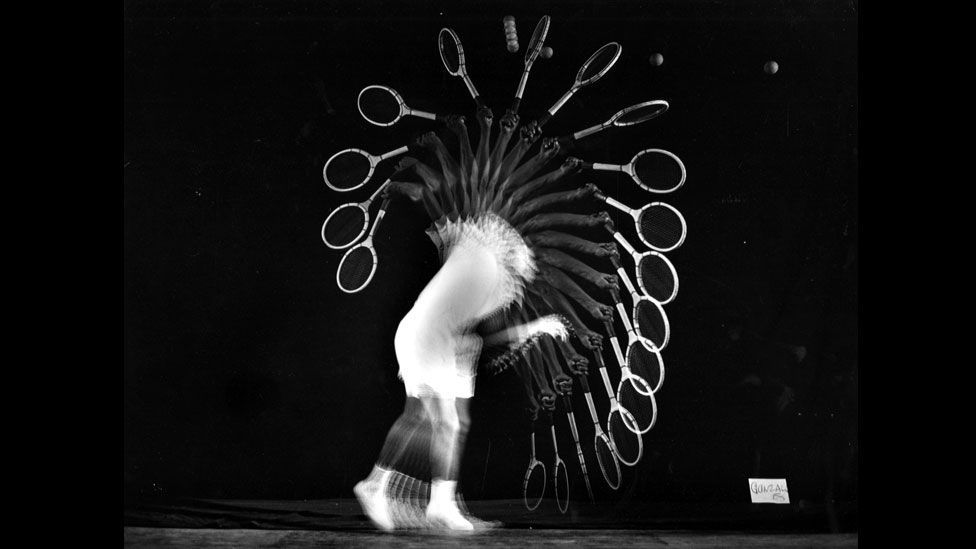
Edgerton's pioneering techniques allowed an athlete'due south practised movements to appear as a series of frozen moments. (Harold Edgerton Annal, MIT)
After Globe War 2, Edgerton created his most technically impressive photographs – ones which captured the very first stages of an atomic explosion. No camera then devised could open and close its shutter speedily plenty, and so Edgerton built his own (chosen the Rapatronic). The light from the explosion activated a photo-electrical prison cell on the forepart of the camera, which opened and airtight the camera. Past 1950, Edgerton'due south technical team had managed to cut the shutter'southward opening time to as little as 1/4,000,000th of a second; the atomic explosions he captured at Eniwetok Atoll in 1952 (from several miles away) are surreal orbs, looking like huge balls of melting wax.
Edgerton, who was still working when he died in 1990 at the age of 86, continued his photographic experiments throughout his bookish and inventing career. His images became lauded not simply as feats of technical prowess but as pieces of modern art. "A great populariser, Edgerton's photographs with their unusual subject matter, sharp detail, strong apply of colour and formal limerick entreatment to a very broad audience," says Harding. "They confirm the extraordinary power of photography and create a sense of wonder from ordinary, everyday events such as a falling drop of milk."
Edgerton himself recoiled at being called an artist. "Don't make me out to exist an artist. I am an engineer. I am after the facts. Only the facts." The burst of flash for your next snapshot, mayhap, is tribute enough.
Dr Harold Edgerton: Abstractions is currently on evidence at the Michael Hoppen Gallery in London, until two August.
If you would like to annotate on this, or anything else y'all have seen on Hereafter, caput over to our Facebook or Google+ page, or message us on Twitter .
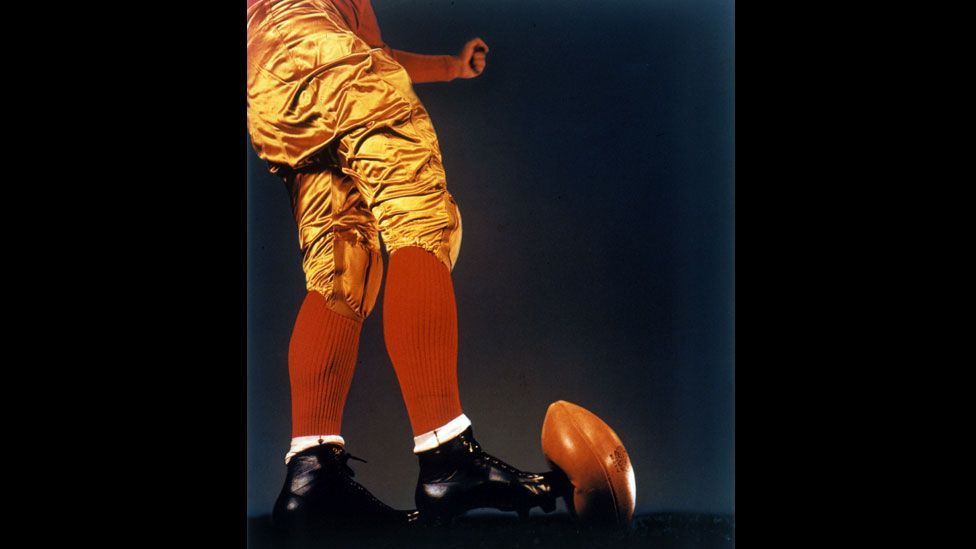
(Harold Edgerton Archive, MIT)
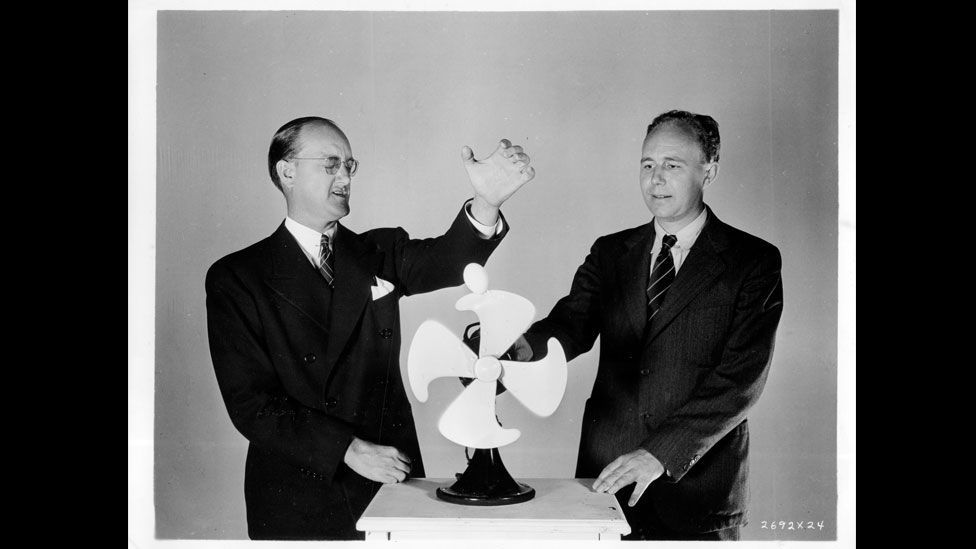
(Harold Edgerton Archive, MIT.)
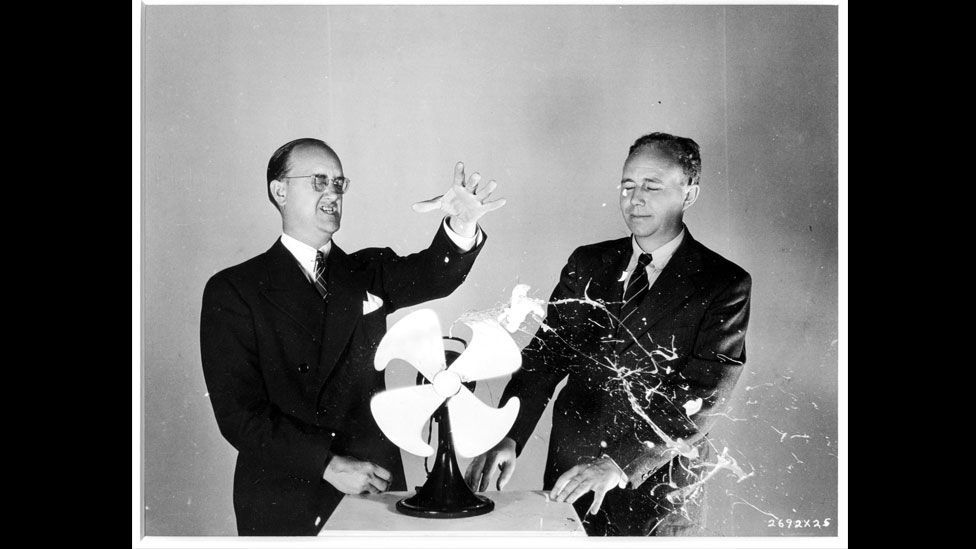
(Harold Edgerton Archive, MIT)
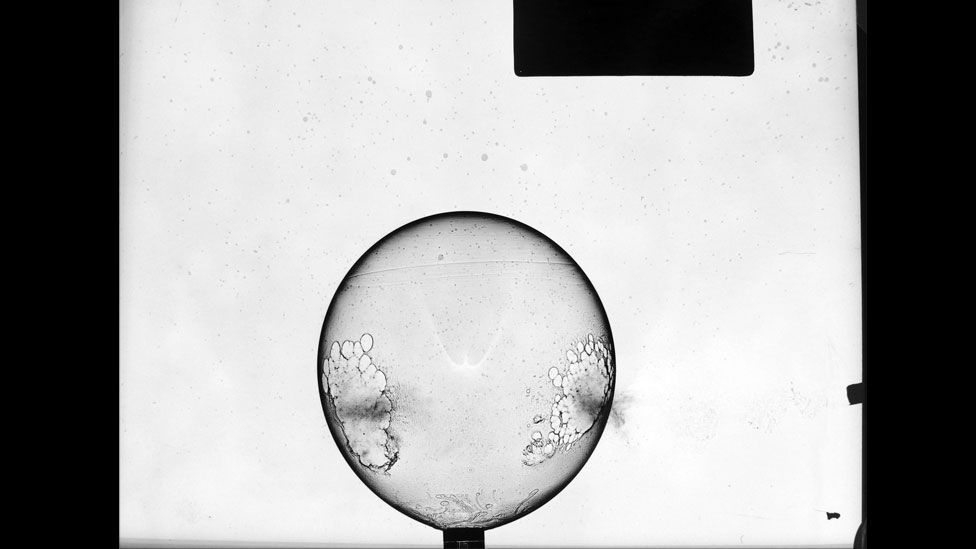
Here's a baloon punctured by a bullet is caught in the moments before it bursts. (Harold Edgerton Annal, MIT)
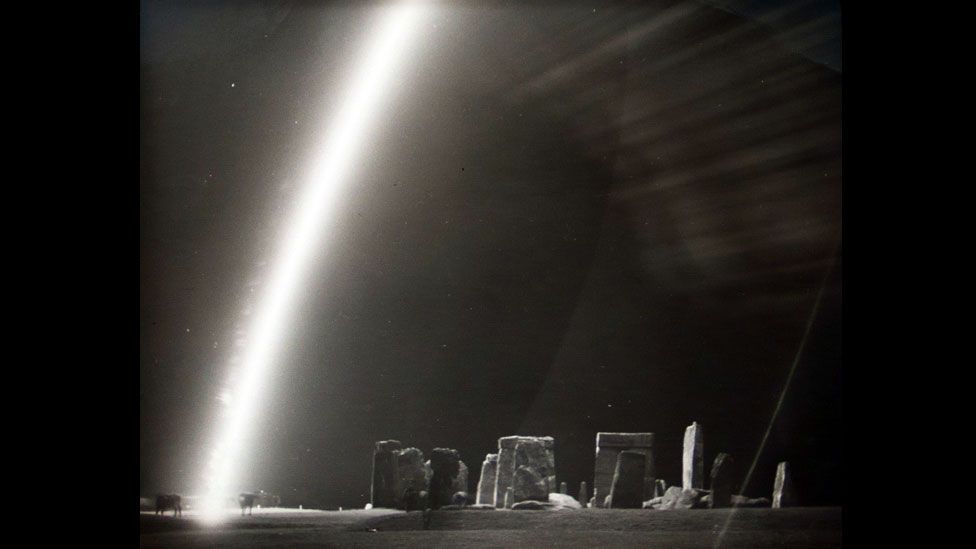
(Harold Edgerton Archive, MIT)
(Harold Edgerton Annal, MIT)
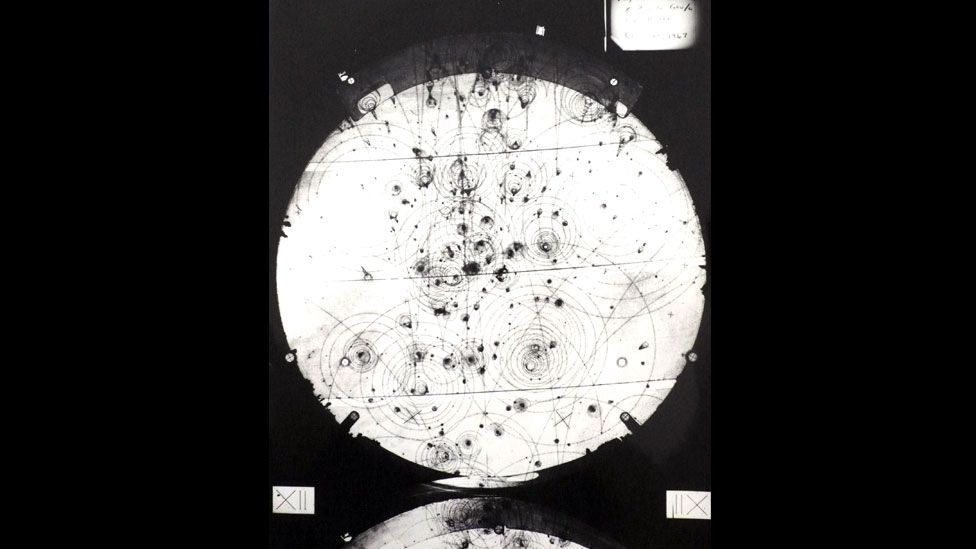
(Harold Edgerton Annal, MIT)
Source: https://www.bbc.com/future/article/20140722-the-man-who-froze-the-world
0 Response to "The New York Museum of Modern Art What Quote Did Harold Edgerton Say"
Post a Comment